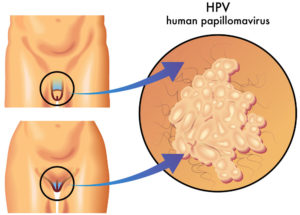By Allison Kozicharow; Edited by Elizabeth Fine
January is Cervical Cancer Awareness Month.
Cervical cancer is the fourth most common cancer in women globally. Vaccination and screening can prevent this cancer, and early detection and treatment can cure it.
Unfortunately, as with too many other diseases, the highest incidences of and deaths from cervical cancer occur in low-resource countries, especially sub-Saharan Africa, Central America and South-East Asia. Women with little or no access to regular health care fall victim to cervical cancer. Further, women living with HIV are six times more likely to develop cervical cancer compared to women without HIV.
 Cervical cancer is a cancer that begins in the cells of the cervix. The cancer is caused by the human papillomavirus or HPV, a common sexually transmitted infection. Although most sexually active people are affected by the virus, the immune system usually clears it from the body. Persistent infection can cause abnormal cells to develop, resulting in cervical cancer.
Cervical cancer is a cancer that begins in the cells of the cervix. The cancer is caused by the human papillomavirus or HPV, a common sexually transmitted infection. Although most sexually active people are affected by the virus, the immune system usually clears it from the body. Persistent infection can cause abnormal cells to develop, resulting in cervical cancer.
Keys to prevention and control of HPV include:
- Vaccination against HPV for both girls and boys at age 9-14 years
- Screening for women from age 30 (age 25 if living with HIV)
- Prompt quality treatment at any age if symptoms or concerns.
WiRED International offers two modules for general audiences on cervical cancer as part of our Cancer series. Part 1 helps women understand the cancer cell growth in the cervix, while showing the risk factors and symptoms of this disease. Part 2 discusses the treatments available to women, such as surgery, radiation and chemotherapy, including their process and effects.
 WiRED trains all our community health workers (CHWs) to recognize signs and symptoms of infection for cancer, HIV etc. CHWs in turn educate their populations on diseases and their prevention through community classes and one-on-one visits, and, if appropriate, refer people to medical professionals and clinics for testing and screening.
WiRED trains all our community health workers (CHWs) to recognize signs and symptoms of infection for cancer, HIV etc. CHWs in turn educate their populations on diseases and their prevention through community classes and one-on-one visits, and, if appropriate, refer people to medical professionals and clinics for testing and screening.
The World Health Organization (WHO) reports that countries around the world are making a commitment to eliminate cervical cancer as a public health problem. The key to prevention and control, according to WHO, is boosting public awareness and access to information and services.


